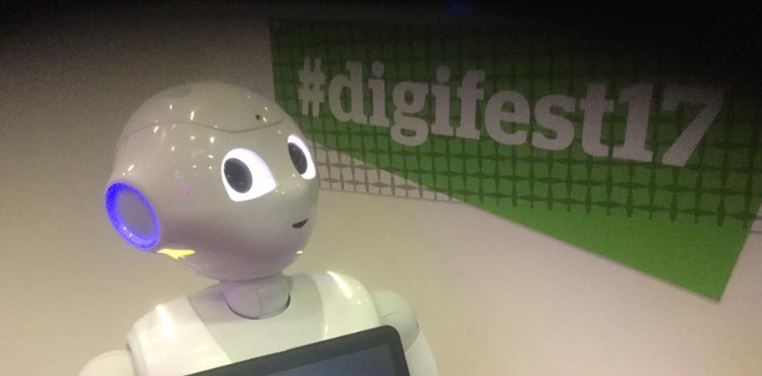How can social media be put to good effect to amplify events?
This week Jisc held its annual Digifest in Birmingham (#Digifest17) and the Subject Specialist team were working hard behind the scenes to ensure the event trended on social media and reached out to those ‘attending’ the event virtually, as well as complementing the activities for those physically present over the two days.

I’m thrilled to report that this year’s #Digifest17 trended third in the UK (just behind the Cheltenham races and Donald Trump’s tax returns!) and experienced in the region of 5,000 tweets under the hashtag!
If you’re looking to amplify your own events with a social media backchannel here are a few pointers to consider that I picked up from #Digifest17.
Preparation, preparation, preparation!
Yes, social media is by its very nature serendipitous, but that doesn’t mean to say that leaving everything to chance will guarantee that it will give your event the coverage it deserves – there’s a lot you can do in advance of the event to maximise engagement on the day itself.
It’s always advisable to create a hashtag early on in the planning process and use it from day one with all content to do with the event. This not only helps to give attendees a central source of up to date news about the event it also empowers your potential attendees to do some of that all-important marketing for you!
Make sure you do your research and find out whether speakers have social media accounts they’re happy to include and have any links to presentations and so on too. Prepare a few template tweets to fire off on the day with this kind of information and you will save you a lot of work later.
Creating social media sharing buttons on any sites you use to provide information about the event also gets the message out there. There are plenty of sites out there that allow you to do it, such as ClicktoTweet, and encourage your speakers and attendees to announce to their followers that they will be attending your event.
It’s not just about Twitter …
The Open University have developed a social media toolkit that includes a really useful overview of many social media tools, such as Periscope, Flickr and Storify, that all link well with Twitter and other social media platforms to amplify your events that’s worth checking out.
On the day of the event assign dedicated people to manage your social media channels so attendees’ posts are responded to and even incorporated into the feel of the event. There are logistical considerations to consider, like ensuring mobile devices being used are fully charged, that all sessions at the event have some coverage and the people doing the social media amplifying are well placed in workshop rooms to hear everything, take photos and capture videos too. If you have access to widescreen TVs dotted around the event venue there are plenty of sites that allow you to display the social media buzz in a visually impactful way too.
Tom Mitchell, Digital Communications Manager at Jisc, also recommends creating a Facebook event page to generate a buzz before, during and after an event. Take a look at the #Digifest17 event page here on Facebook for some ideas on the kinds of things to include.
In a previous post Chris Thomson provides a closer look at Periscope and explains how it can be easily put to good effect to live stream presentations and workshops at events – again, the point about setting up beforehand in a good viewing position away from unnecessary background noise is doubly important here.
The key is to include a range of media to ensure the content is fresh, stimulating and adds value to the event. Photos, videos, links to presentations and further content all add value and are more likely to amplify your event.
Some may even scoff at the seemingly trivial nature of sharing photos of cakes and the like at events, but sometimes quirky can generate interest and help boost your event in ways you’d never even have anticipated. I remember being at a Connect More event last summer where a little toy monkey kept mysteriously cropping up in many of the photos and it certainly added a sense of fun and got plenty of retweets (it became a little bit like a game of ‘Where’s Wally!’).
Remember to keep your attendees engaged before, during and after the event too. Storify is a great way of bringing together your portfolio of social media around a particular event into one place by creating a digital record (or story) that can be shared with attendees afterwards. It also includes your attendees in that social media buzz around the event by acknowledging their posts – take a look at the Storify from Jisc’s Connect More event in Liverpool last summer for ideas.
Find out more!
I’ve created a draft checklist for using social media that you are welcome to use as a starting point at your own events. Feel free to repurpose this as required and let us know your own experiences of using social media at events in the comments section below.
All the resources from #Digifest17 will soon be available here and for more tips on using social media in teaching and learning take a look at Jisc’s 50 most influential Further Education professionals and Higher Education professionals using social media.

